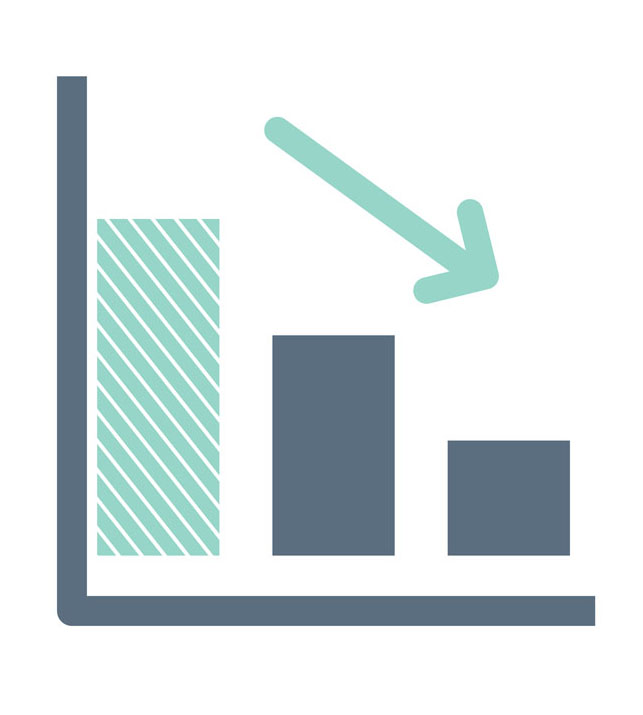A communication with the PCP or with the Planning and production control It is a management model increasingly used by textile industries.
The PCP makes it possible to employ equipment, inputs and labor in a more rational way, that is, to have a production control.
Therefore, the communication with the PCP It is essential to the textile industry, as it directly influences the consumption of resources, and actions such as purchasing planning and production according to demand.
The PCP system pursues efficiency, for this reason it contributes to process improvements and makes textiles more competitive. This is feasible based on the identification of precise data that points to positive characteristics to be encouraged and flaws to be eliminated.
Understand the objectives of good communication with the PCP:
- Optimize productivity.
- Improve the use of available resources.
- Integration of sectors.
- Improve production performance through techniques.
- Meet demand within determined deadlines.
- Reduce costs.
- Define an appropriate schedule for production.
- Adapt the production layout to make good use of the flow of inputs.
- Plan the company’s production capacity.
Communication with the PCP in manufacturing
In a clothing factory, communication with the PCP enables control and programming of the production process in the development, modeling, cutting and sewing departments.
It is the Production and Control Planning (PCP) that ensures quality production, in the quantity and within the timeframe stipulated by the manufacturing planning.
There are three basic models of Production Planning and Control:
- Flow-based: Executed for continuous production.
- For special projects: Used in the production of discontinued products.
- Order-based: Ideal for intermittent production.
How to implement a PCP model?
When implementing one of the PCP models, the clothing manufacturer must consider its type of production
Based on the choice, and with well-established communication with PCP, the result will be an active system where team responsibilities are clear, as well as internal policies and methodologies.

Typically, the introduction of the PCP goes through six phases. Check out:
- 1st Demand Forecasting: This is the stage where a projection is developed, providing managers with the opportunity to evaluate production and the necessary materials.
- 2nd Production Capacity Planning: Through data analysis, managers determine if any resizing is necessary.
- 3rd Aggregate Production Planning (APP): This phase involves the manager devising a strategy starting from defining the production volume. This document is annual but needs to be updated every month.
- 4th Master Production Scheduling (MPS): A more detailed document than the APP. It includes demand forecasting, purchases and orders made, as well as production requests. It also analyzes production plans in a short-term timeframe based on available resources.
- 5th Detailed Production Planning (DPP): It covers the issuance and release of orders, material management, and the sequence of production orders. Some people develop this stage through kanban..
- 6th Production Control: Involves monitoring the execution of the planned activities.
Communication with Production and Control Planning (PCP) and Sales Forecasting
During the implementation of a PCP model, one of the most relevant things is the sales forecast, as the system makes it easier to see the demand for each clothing product.
This characteristic of PCP gives managers the option to organize production according to what customers are seeking.

In practice, moving averages are the most commonly used forecasting method in the textile industry. However, they are only suitable for products not affected by seasonality.
For example, a clothing manufacturer trying to predict shorts sales in the summer based on data collected during the fall and winter would likely face stock shortages for the warmer season. Logically, there would not be enough stock for the public in the warmer season.
Understand the advantages of efficient communication with the PCP
Basis for decision making
With PCP, managers have production data always at hand, being able to identify flaws and potential in real time.
Information is essential for industry managers and directors to make the right decisions, supported by facts.
+ Find out more: What is quality control? How does it work in the textile industry?
Up-to-date production schedule
Through the PCP it is possible to guarantee orders, notice delays and keep demands up to date.
Just check the delivery date and follow the production stage of each demand.
Perception of idle resources
Items sitting in stock depreciate in value and generate costs. Here the advantage of the PCP is that it allows the perception of idle items and the review of the purchasing plan.
This way, they are prevented from spinning.
+ Find out more: How to modernize quality control in manufacturing?
Cost reduction
The PCP directs and manages the material supply and processing activities of an industry.
Therefore, the production of products follows established methods for an approved sales program.

Available capital, human resources and industrial facilities are optimized.
By having tools to know which are the best-selling products, the most used raw materials and maintaining stocks in accordance with public demands, the textile industry reduces costs.
Expanding control also reduces rework, losses and waste. The consequence is sustainable growth.
+ Find out more: Mesh Preparation: Who is your cheapest supplier?
Recognizing bottlenecks in a timely manner
By implementing the PCP, the textile industry is able to identify its potential and points that need correction.
Working with effective prevention and palliative measures is simpler when you know exactly where to act.
Even though no forecasting model is perfect, the use of good tools can prevent the need to bear unnecessary costs, such as those resulting from a lack of products or resulting from an offer.
Want to know more about bottlenecks in the textile industry? Then read the article: Textile production problems: How to reduce their impacts?
To learn about tools that can help control and optimize productivity in textile industries, contact our team.

